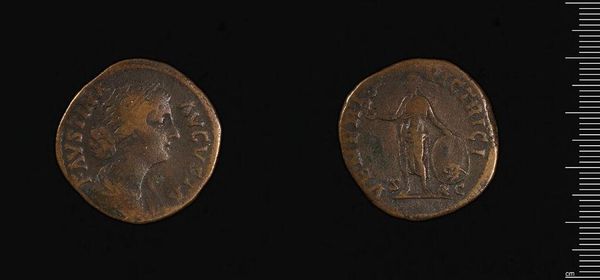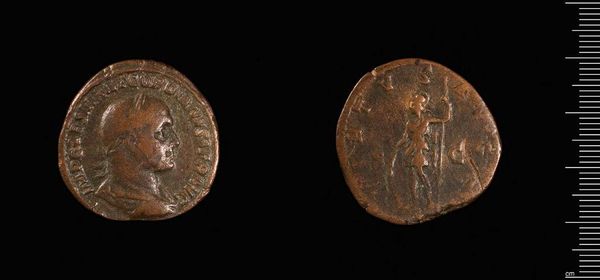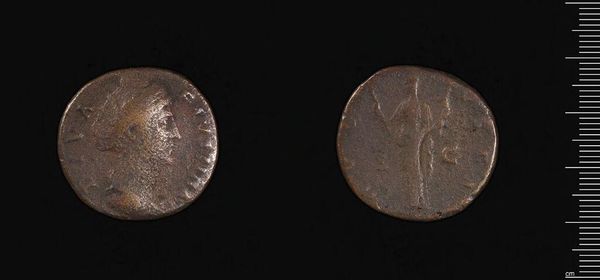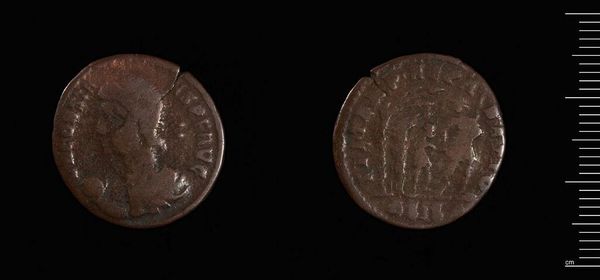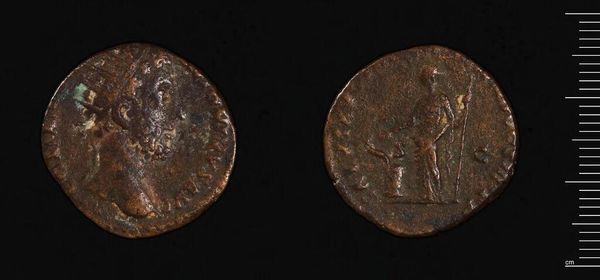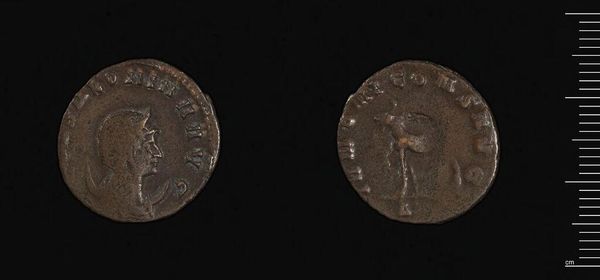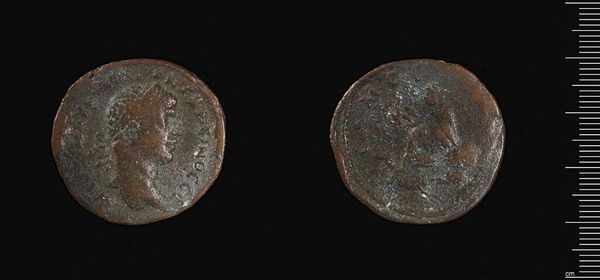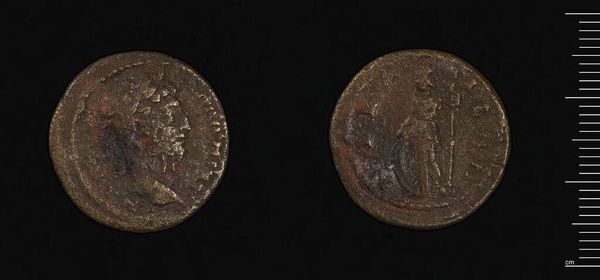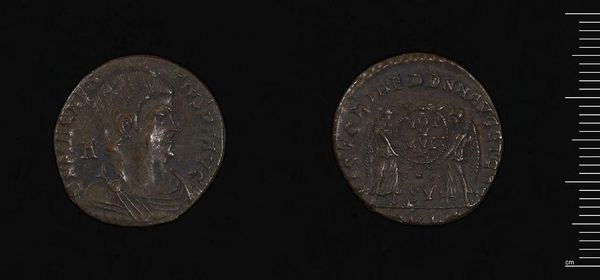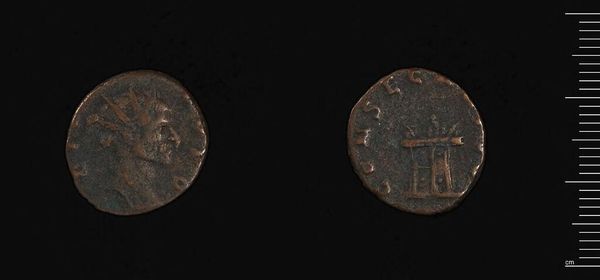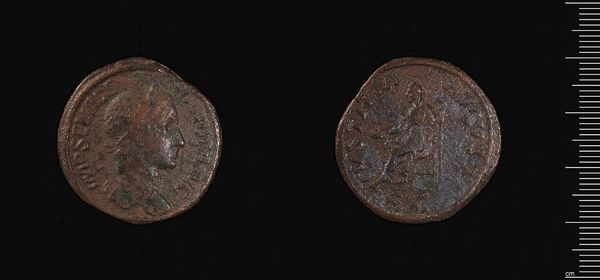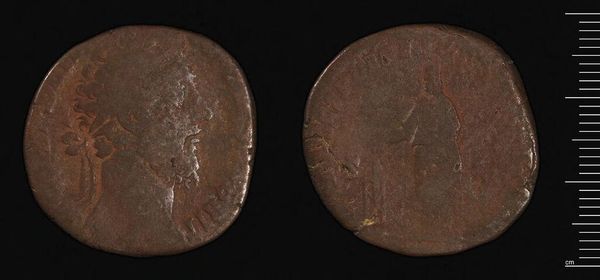
Dimensions: 21.88 g
Copyright: CC0 1.0
Curator: Immediately, I’m struck by the stoicism etched onto this tiny, worn surface. Editor: We're looking at a Sestertius of Faustina I, housed here at the Harvard Art Museums. Though the artist is technically Faustina I herself, its production reflects the socio-political power of imperial portraiture. Curator: The profile, though faded, still emanates an air of Roman dignity. There's a weight to the image, a sense of enduring power communicated through a standardized, replicable form. Editor: Absolutely. These coins served as propaganda. Distributing Faustina’s image reinforced the Emperor's authority and projected an ideal of Roman womanhood: piety, virtue, and motherhood. Curator: It's fascinating how these seemingly insignificant objects become potent symbols of authority, shaping public perception and memory across vast stretches of time. The symbolic value transcends its material worth. Editor: Indeed. These coins circulated widely, entering the hands of everyday people and embedding the imperial image in the collective consciousness. It’s a powerful lesson in the politics of imagery. Curator: I find myself pondering the journey of this particular coin, the hands it passed through, the stories it might have witnessed. Editor: Considering its journey through time really underscores the power of objects to connect us to the past.
Comments
No comments
Be the first to comment and join the conversation on the ultimate creative platform.
